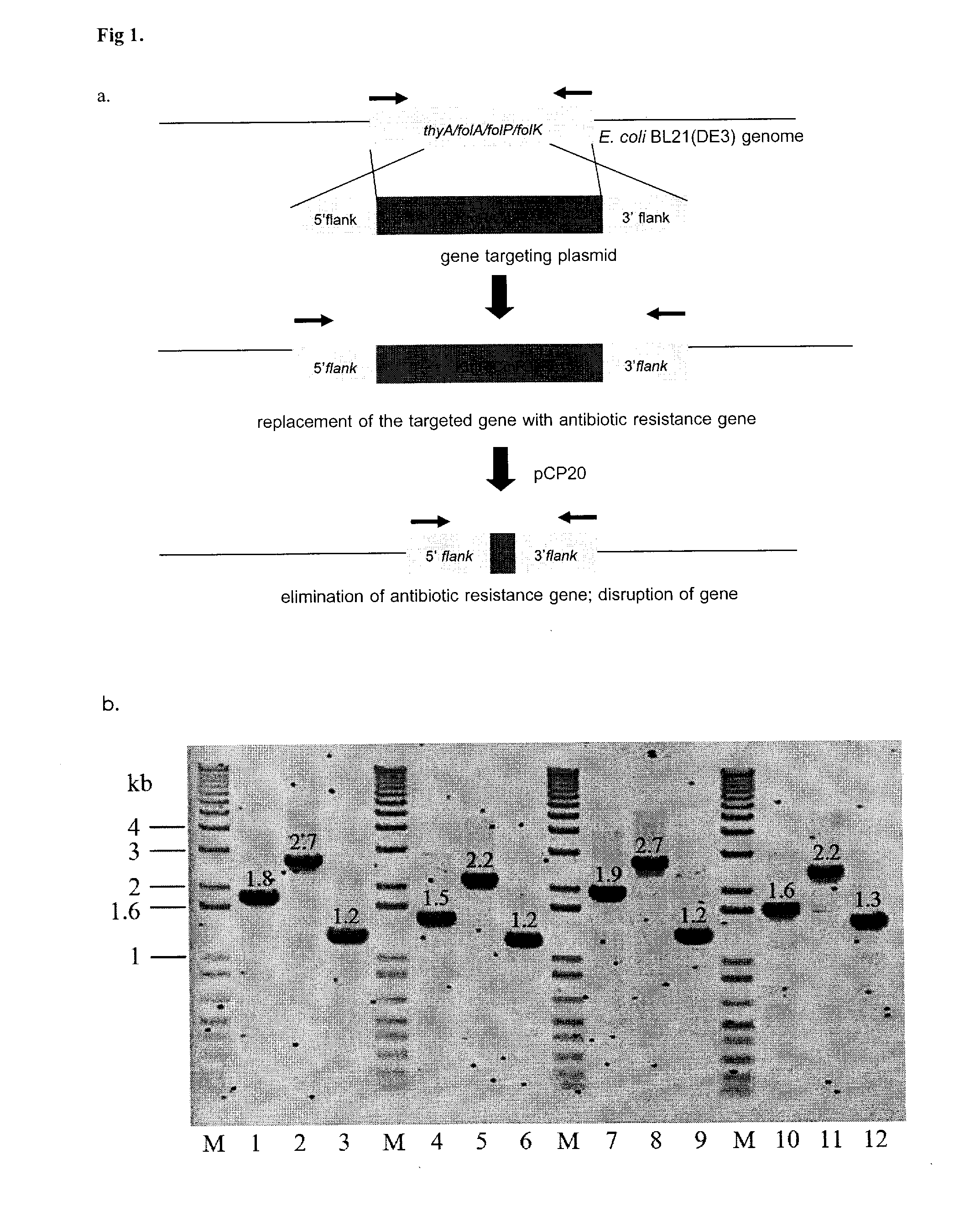A bacterial surrogate for testing of antimalarials: thya knockout, fola knockout, folp knockout, and folk knockout bacteria for testing of inhibition of antifolate pathway
a technology of antifolate pathway and surrogate bacteria, which is applied in the field of bacteria surrogate for testing of antimalarials, can solve the problems of limited antimalarial screening capacity, labor-intensive assay, and high cost, and achieve the effect of reducing the number of patients and limiting the number of patients
- Summary
- Abstract
- Description
- Claims
- Application Information
AI Technical Summary
Benefits of technology
Problems solved by technology
Method used
Image
Examples
Embodiment Construction
[0077]As described above in disclosure of invention section
INDUSTRIAL APPLICABILITY
[0078]As described above in disclosure of invention section
REFERENCES
[0079]1. Bunyarataphan S., Leartsakulpanich U., Taweechai S., Tarnchompoo B., Kamchonwongpaisan S., and Yuthavong Y. (2006) Evaluation of the Activities of Pyrimethamine Analogs against Plasmodium vivax and Plasmodium falciparum Dihydrofolate Reductase-Thymidylate Synthase Using In Vitro Enzyme Inhibition and Bacterial Complementation Assay. Antimicrobial Agents and Chemotherapy 50: 3631-3637.[0080]2. Chusacultanachai S., Thiensathit P., Tarmchompoo B., Sirawaraporn W., and Yuthavong Y. (2002) Novel antifolate resistant mutations of Plasmodium falciparum dihydrofolate reductase selected in Escherichia coli. Molecular and Biochemical Parasitology 120: 61-72.[0081]3. Ahrweiler P. M., and Frieden C. (1988) Construction of afol Mutant Strain of Escherichia coli for Use in Dihydrofolate Reductase Mutagenesis Experiments. Journal of Bacter...
PUM
| Property | Measurement | Unit |
|---|---|---|
| antibiotic resistance | aaaaa | aaaaa |
| enzyme activity | aaaaa | aaaaa |
| drug resistance | aaaaa | aaaaa |
Abstract
Description
Claims
Application Information
 Login to View More
Login to View More - R&D
- Intellectual Property
- Life Sciences
- Materials
- Tech Scout
- Unparalleled Data Quality
- Higher Quality Content
- 60% Fewer Hallucinations
Browse by: Latest US Patents, China's latest patents, Technical Efficacy Thesaurus, Application Domain, Technology Topic, Popular Technical Reports.
© 2025 PatSnap. All rights reserved.Legal|Privacy policy|Modern Slavery Act Transparency Statement|Sitemap|About US| Contact US: help@patsnap.com



